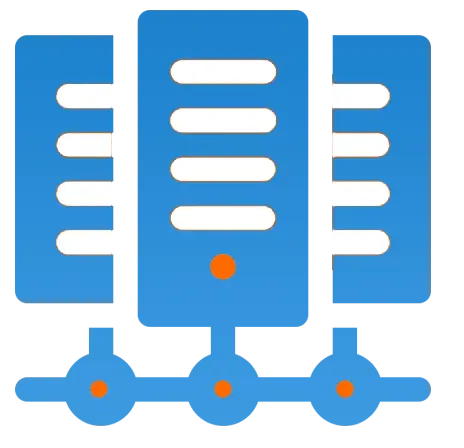Get 69% Off on Cloud Hosting : Claim Your Offer Now!
- Products
-
Compute
Compute
- Predefined TemplatesChoose from a library of predefined templates to deploy virtual machines!
- Custom TemplatesUse Cyfuture Cloud custom templates to create new VMs in a cloud computing environment
- Spot Machines/ Machines on Flex ModelAffordable compute instances suitable for batch jobs and fault-tolerant workloads.
- Shielded ComputingProtect enterprise workloads from threats like remote attacks, privilege escalation, and malicious insiders with Shielded Computing
- GPU CloudGet access to graphics processing units (GPUs) through a Cyfuture cloud infrastructure
- vAppsHost applications and services, or create a test or development environment with Cyfuture Cloud vApps, powered by VMware
- Serverless ComputingNo need to worry about provisioning or managing servers, switch to Serverless Computing with Cyfuture Cloud
- HPCHigh-Performance Computing
- BaremetalBare metal refers to a type of cloud computing service that provides access to dedicated physical servers, rather than virtualized servers.
-
Storage
Storage
- Standard StorageGet access to low-latency access to data and a high level of reliability with Cyfuture Cloud standard storage service
- Nearline StorageStore data at a lower cost without compromising on the level of availability with Nearline
- Coldline StorageStore infrequently used data at low cost with Cyfuture Cloud coldline storage
- Archival StorageStore data in a long-term, durable manner with Cyfuture Cloud archival storage service
-
Database
Database
- MS SQLStore and manage a wide range of applications with Cyfuture Cloud MS SQL
- MariaDBStore and manage data with the cloud with enhanced speed and reliability
- MongoDBNow, store and manage large amounts of data in the cloud with Cyfuture Cloud MongoDB
- Redis CacheStore and retrieve large amounts of data quickly with Cyfuture Cloud Redis Cache
-
Automation
Automation
-
Containers
Containers
- KubernetesNow deploy and manage your applications more efficiently and effectively with the Cyfuture Cloud Kubernetes service
- MicroservicesDesign a cloud application that is multilingual, easily scalable, easy to maintain and deploy, highly available, and minimizes failures using Cyfuture Cloud microservices
-
Operations
Operations
- Real-time Monitoring & Logging ServicesMonitor & track the performance of your applications with real-time monitoring & logging services offered by Cyfuture Cloud
- Infra-maintenance & OptimizationEnsure that your organization is functioning properly with Cyfuture Cloud
- Application Performance ServiceOptimize the performance of your applications over cloud with us
- Database Performance ServiceOptimize the performance of databases over the cloud with us
- Security Managed ServiceProtect your systems and data from security threats with us!
- Back-up As a ServiceStore and manage backups of data in the cloud with Cyfuture Cloud Backup as a Service
- Data Back-up & RestoreStore and manage backups of your data in the cloud with us
- Remote Back-upStore and manage backups in the cloud with remote backup service with Cyfuture Cloud
- Disaster RecoveryStore copies of your data and applications in the cloud and use them to recover in the event of a disaster with the disaster recovery service offered by us
-
Networking
Networking
- Load BalancerEnsure that applications deployed across cloud environments are available, secure, and responsive with an easy, modern approach to load balancing
- Virtual Data CenterNo need to build and maintain a physical data center. It’s time for the virtual data center
- Private LinkPrivate Link is a service offered by Cyfuture Cloud that enables businesses to securely connect their on-premises network to Cyfuture Cloud's network over a private network connection
- Private CircuitGain a high level of security and privacy with private circuits
- VPN GatewaySecurely connect your on-premises network to our network over the internet with VPN Gateway
- CDNGet high availability and performance by distributing the service spatially relative to end users with CDN
-
Media
-
Analytics
Analytics
-
Security
Security
-
Network Firewall
- DNATTranslate destination IP address when connecting from public IP address to a private IP address with DNAT
- SNATWith SNAT, allow traffic from a private network to go to the internet
- WAFProtect your applications from any malicious activity with Cyfuture Cloud WAF service
- DDoSSave your organization from DoSS attacks with Cyfuture Cloud
- IPS/ IDSMonitor and prevent your cloud-based network & infrastructure with IPS/ IDS service by Cyfuture Cloud
- Anti-Virus & Anti-MalwareProtect your cloud-based network & infrastructure with antivirus and antimalware services by Cyfuture Cloud
- Threat EmulationTest the effectiveness of cloud security system with Cyfuture Cloud threat emulation service
- SIEM & SOARMonitor and respond to security threats with SIEM & SOAR services offered by Cyfuture Cloud
- Multi-Factor AuthenticationNow provide an additional layer of security to prevent unauthorized users from accessing your cloud account, even when the password has been stolen!
- SSLSecure data transmission over web browsers with SSL service offered by Cyfuture Cloud
- Threat Detection/ Zero DayThreat detection and zero-day protection are security features that are offered by Cyfuture Cloud as a part of its security offerings
- Vulnerability AssesmentIdentify and analyze vulnerabilities and weaknesses with the Vulnerability Assessment service offered by Cyfuture Cloud
- Penetration TestingIdentify and analyze vulnerabilities and weaknesses with the Penetration Testing service offered by Cyfuture Cloud
- Cloud Key ManagementSecure storage, management, and use of cryptographic keys within a cloud environment with Cloud Key Management
- Cloud Security Posture Management serviceWith Cyfuture Cloud, you get continuous cloud security improvements and adaptations to reduce the chances of successful attacks
- Managed HSMProtect sensitive data and meet regulatory requirements for secure data storage and processing.
- Zero TrustEnsure complete security of network connections and devices over the cloud with Zero Trust Service
- IdentityManage and control access to their network resources and applications for your business with Identity service by Cyfuture Cloud
-
-
Compute
- Solutions
-
Solutions
Solutions
-
 Cloud
Hosting
Cloud
Hosting
-
 VPS
Hosting
VPS
Hosting
-
GPU Cloud
-
 Dedicated
Server
Dedicated
Server
-
 Server
Colocation
Server
Colocation
-
 Backup as a Service
Backup as a Service
-
 CDN
Network
CDN
Network
-
 Window
Cloud Hosting
Window
Cloud Hosting
-
 Linux
Cloud Hosting
Linux
Cloud Hosting
-
Managed Cloud Service
-
Storage as a Service
-
 VMware
Public Cloud
VMware
Public Cloud
-
 Multi-Cloud
Hosting
Multi-Cloud
Hosting
-
 Cloud
Server Hosting
Cloud
Server Hosting
-
 Bare
Metal Server
Bare
Metal Server
-
 Virtual
Machine
Virtual
Machine
-
 Magento
Hosting
Magento
Hosting
-
Remote Backup
-
 DevOps
DevOps
-
 Kubernetes
Kubernetes
-
 Cloud
Storage
Cloud
Storage
-
NVMe Hosting
-
 DR
as s Service
DR
as s Service
-
-
Solutions
- Marketplace
- Pricing
- Resources
- Resources
-
By Product
Use Cases
-
By Industry
- Company
-
Company
Company
-
Company
Shielded computing vs traditional security measures: which is more effective?
Table of Contents
What is Shielded Computing?
A secure computing environment designed to protect against unauthorized access and tampering is known as Shielded computing. The creation of this type of secure environment is typically done by using hardware-based security features, such as a Trusted Platform Module (TPM). This security feature is a microcontroller built into the computer’s motherboard.
The purpose of the TPM is to store encryption keys, digital certificates, and other secure information, making it possible to create a secure environment even if the computer’s operating system has been compromised.
What is TPM and how it works?
The Trusted Platform Module (TPM) is a specialized security chip found in laptops and desktop computers, designed to secure the device with integrated cryptographic keys. It verifies a user’s identity and authenticates the device, protecting against firmware and ransomware attacks.
A TPM is used in shielded computing for digital rights management (DRM) to protect Windows-based systems and enforce software licenses. It can also be used to store passwords, certificates or encryption keys. This type of security chip can be used with any major OS. In conjunction, it works excellently with other security technologies, such as antivirus software, firewalls, smart cards and biometric verification.
A TPM chip contains an Endorsement Key (EK) RSA key pair for secure storage and an Attestation Identity Key (AIK) to protect against unauthorized firmware/software modifications. The Storage Root Key is created from the EK and owner-specified password. AIK hashes critical components before execution and verifies them with a network server, denying access if modifications are detected.
TPM uses and benefits
The benefits of using TPMs include:
- Generation, storage, and control of cryptographic keys.
- Platform integrity through change-detection metrics.
- Platform authentication using TPM’s RSA key.
- Defense against firmware, ransomware, dictionary, and phishing attacks.
- Protection of digital media rights with DRM technology.
- Secure protection of software licenses.
What are Traditional Security Measures?
On the other hand, traditional security measures refer to the methods and technologies used to secure physical assets, information, and individuals from unauthorized access, theft, or damage.
These traditional security measures include –
- Physical security: locks, security cameras, guards, fences, etc.
- Network security: network firewalls, antivirus software, intrusion detection and prevention systems, etc.
- Authentication and access control: passwords, biometric identification, smart cards, etc.
- Data encryption: used to protect sensitive information transmitted or stored electronically.
The goal of these measures is to prevent unauthorized access, maintain the confidentiality and integrity of information, and ensure the availability of resources in the event of a security breach.
In this article, we will see which is more effective Shielded computing or traditional security measures.
Shielded computing vs traditional security measures
|
Feature |
Shielded computing |
Traditional security measures |
|
Definition |
A secure computing environment that is designed to protect against unauthorized access and tampering, created using hardware-based security features such as a Trusted Platform Module (TPM). |
Software-based security solutions such as antivirus, firewalls, and intrusion detection systems are designed to prevent unauthorized access and protect against security threats. |
|
Effectiveness |
Provides a secure environment for sensitive information, designed to prevent unauthorized access to data and protect against tampering. |
Flexible and can be updated and customized more easily, have a wider range of capabilities, and are typically less expensive. |
|
Best for |
Organizations with high-security requirements for sensitive information. |
Organizations with flexible security needs and limited budgets. |
|
Cost |
Generally more expensive than traditional security measures. |
Typically less expensive than shielded computing. |
|
Customizability |
Limited, as it relies on hardware-based security features. |
More flexible and can be updated and customized more easily. |
|
Capabilities |
Limited to provide a secure environment for sensitive information. |
Can detect and respond to new security threats and have a wider range of capabilities. |
|
Complexity is |
Maybe more complex to set up and maintain, as it requires specialized hardware and expertise. |
Typically easier to set up and maintain, as they are software-based solutions. |
|
Scalability |
May be less scalable, as adding or upgrading hardware-based security features can be more challenging. |
More scalable, as software-based solutions can be easily updated and deployed across multiple systems. |
|
Maintenance |
Requires regular maintenance and updates to ensure the hardware-based security features functioning properly. |
Typically require less maintenance, as updates and patches can be easily applied to software-based solutions. |
|
Integration |
May be more difficult to integrate with existing systems, as it requires specialized hardware and expertise. |
Typically easier to integrate with existing systems, as software-based solutions can be easily deployed across multiple systems. |
Thus, the most effective approach to security between Shielded computing and traditional security will depend on the organisation’s specific needs.
A combination of shielded computing and traditional security measures is likely the best approach for organisations that need high-security requirements. This will provide the organization with the most comprehensive protection against unauthorized access and tampering and the flexibility and affordability of traditional security measures.
Conclusion
Shielded computing and traditional security measures have their strengths and weaknesses, and the most effective approach depends on the organisation’s specific security needs. Organizations with high-security requirements should combine both approaches to provide the most comprehensive protection against unauthorized access and tampering.
Recent Post

Stay Ahead of the Curve.
Join the Cloud Movement, today!
© Cyfuture, All rights reserved.
Send this to a friend

 Pricing
Calculator
Pricing
Calculator
 Power
Power
 Utilities
Utilities VMware
Private Cloud
VMware
Private Cloud VMware
on AWS
VMware
on AWS VMware
on Azure
VMware
on Azure Service
Level Agreement
Service
Level Agreement 


















